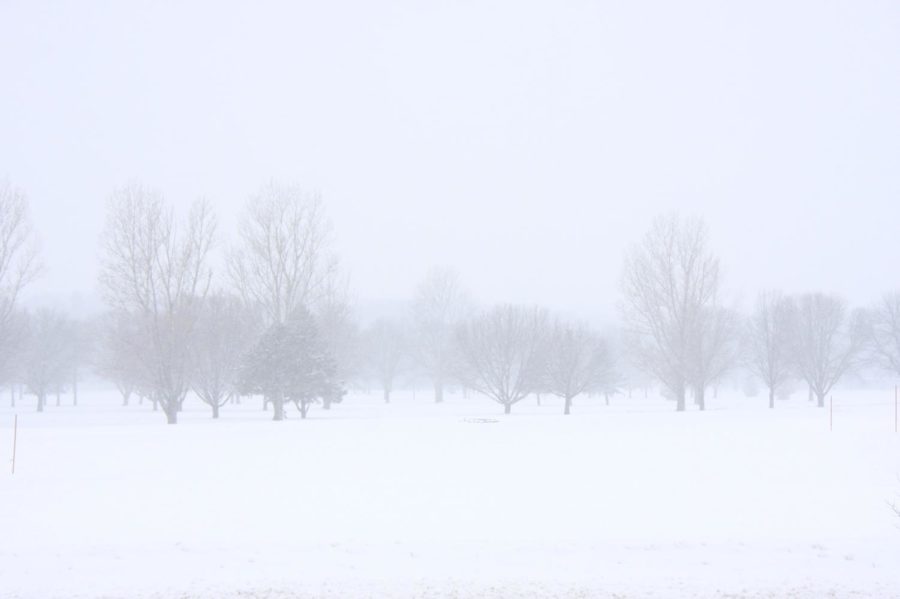Siren alert system modified to assist citizens more
Photo: Andrew Clawson/Iowa State Daily
The Veenker Memorial Golf course is seen covered in a snowy haze on Feb. 26 during Winter Storm Rocky.
April 15, 2013
Outdoor warning sirens in Story County have been modified to be made more sensitive to powerful winds, as opposed to detecting when there may be a potential tornado.
“The Ames Police Chief approached our agency after severe winds that weren’t labeled as a tornado impacted the northern part of Ames in May of 2012, but the storm created damage that would have been a significant risk to people outside,” said Keith Morgan, the Emergency Manager of Story County.
Keith said the Ames Police Chief asked the agency to consider the pros and cons of expanding the use of outdoor warning sirens to protect citizens that may be outside without normal methods of severe weather warning.
“He asked us to look into the pros/cons of expanding the use of outdoor warning sirens to protect citizens that may be outside, without access to normal methods of severe weather warning like a [National Oceanic and Atmospheric Administration] weather radio or television and radio, by giving them time to get inside and sheltered before dangerous conditions strike,” Morgan said.
Before the modifications to the alert system, activation of the sirens was only for a tornado warning from the National Weather Service or when a tornado was identified by a trained storm spotter.
New guidance was then expanded to include winds of 70 miles per hour or greater, as well as golf-ball sized hail. National Weather Service Warnings also include a tag that can predict the strength of winds as well as the size of hail.
“As I understand it, ISU warning sirens can be activated independently of those in Ames, but Ames will typically activate both sets of sirens when conditions are warranted,” Morgan said.
Morgan works with the Story County Emergency Management Agency and they were the ones who made the modification of the system possible.
It is governed by Iowa Code and reports to a commission that is made up of the mayors of all the cities within the county, one representative from the board of supervisors and the sheriff.
Josh Alland, a senior in meteorology and the president of the ISU American Meteorological Society, worked with Morgan to develop documents that will aid Story County citizens in learning about the new system.
“One attachment is an article describing the new edition to the sirens, and the other is a promotional flyer,” Alland said. “Both of these documents have a lot of good information discussing why the sirens are used and why sirens will now sound for strong wind and large hail.”
According to the article that describes the new additions to the siren alert system, Morgan gave two tips for severe weather.
The first is to be aware of the weather situation before going outside. That way, one will be able to be more readily prepared in the case of a storm.
Second, Morgan advises all to be aware of the sirens and their uses. If one is going off, there is a high probability of a severe storm, and citizens should seek shelter right away.
The Story County Emergency Management Agency also monitors severe weather and will work with the Ames Police dispatch and Story County Sheriff’s Office dispatch to try and gather storm reports and keep them advised of severe weather conditions. These agencies can thendetermine if activation of sirens is justified.
Morgan believes that the modifications have given citizens everything they need to be prepared; now they just need to take advantage of that.
“Don’t try and figure out if it’s due to a tornado or winds, don’t call 911 to ask why the sirens have been activated; seek shelter and use other sources of information to determine what’s going on,” Morgan said. “One more thing: These sirens are solely for people that are outside; don’t depend on them to provide warning for you if you are inside. Get a weather radio for indoor warning.”

















